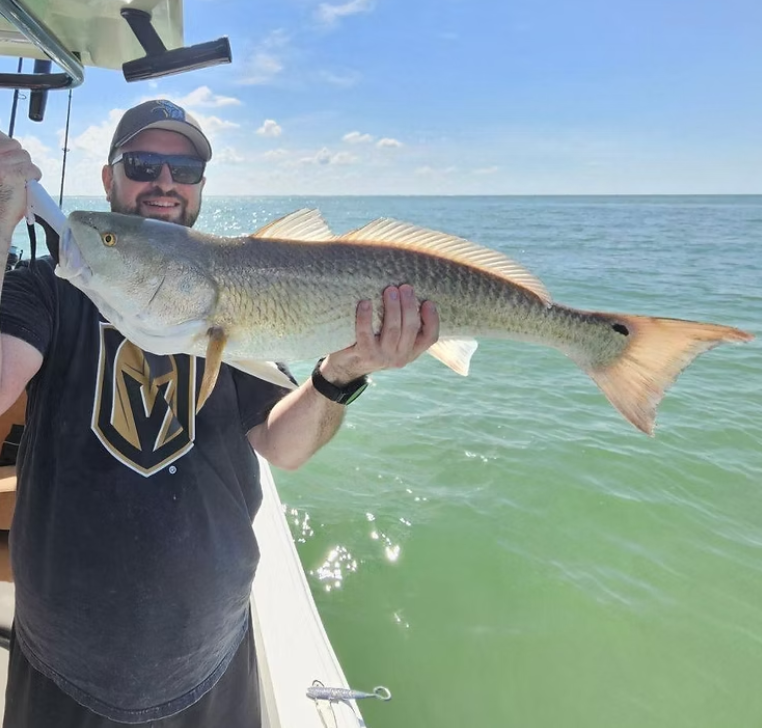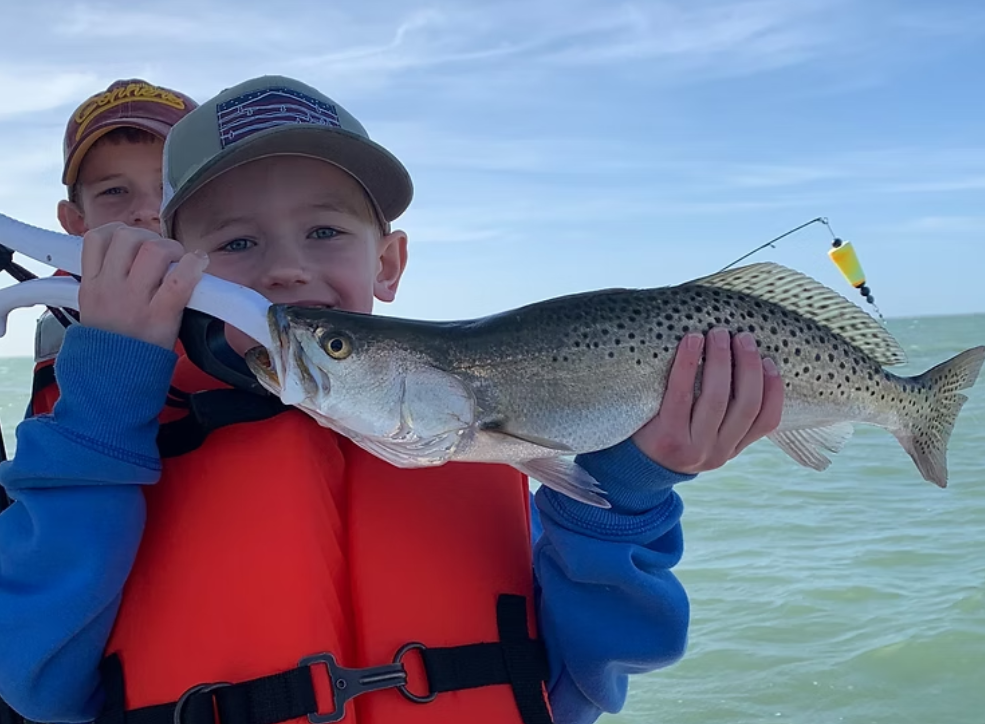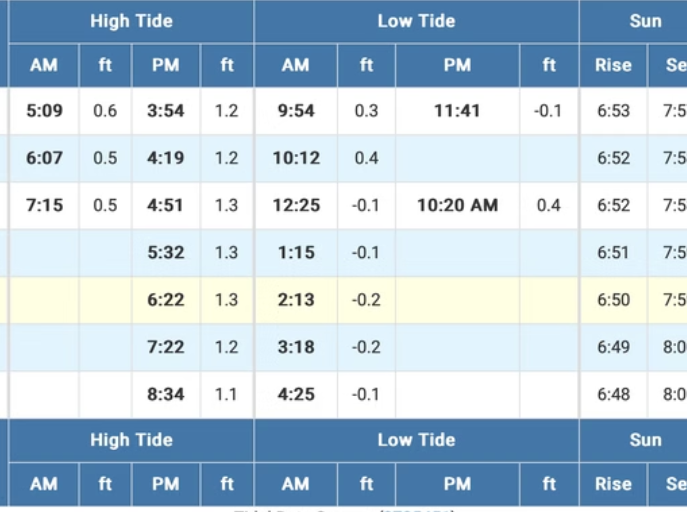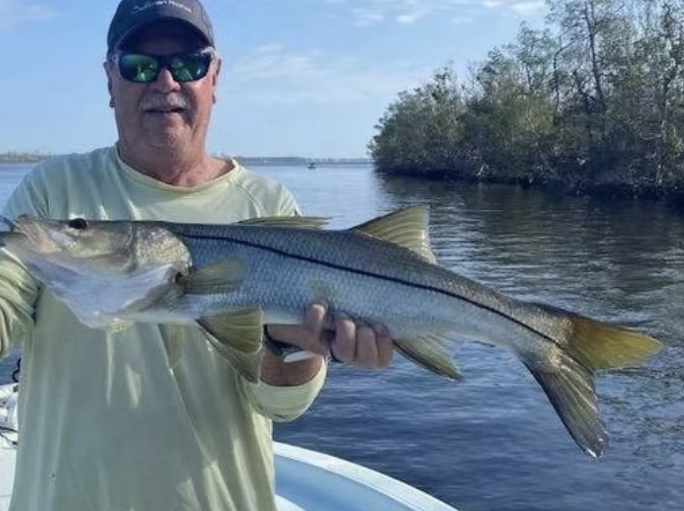Captain for Hire
Sanibel Island - Lee, FL
Lanes were on fire today; as soon your bait hit bottom, you were on. My good friend Jarrod from 5th Gen joined in on the fun also.
Fishing Style
Gear & Tackle Used: Live Shrimp

September 26, 2025
As the sun casts its warm glow over the tranquil waters of Pine Island Sound, anglers are gearing up for an unforgettable experience. The buzz around the fishing community is undeniable—Redfish are making their grand entrance and are here in impressive numbers! From the southern shores of Sanibel Island to the northern reaches of Captiva Island, enthusiasts are enthusiastically reeling in these prized catches. Venturing into the heart of the action, I recently found myself amidst the excitement, exploring the Pineland area of Pine Island and the picturesque southern islands of Matlacha. What awaited me was nothing short of spectacular. The waters teemed with Redfish, their shimmering scales glistening under the sunlight, beckoning me to join in the chase. Equipped with my reliable gear and a sense of anticipation, I embarked on a quest to conquer these elusive beauties. And conquer them I did! The The resistance of the line and the gratification of landing a prized upper-slot Redfish—it was a thrill beyond compare, a testament to the rewarding nature of fishing in Pine Island Sound, the exhilaration of the chase, What's the secret to success, you might wonder? Well, it's all about the bait. In these bountiful waters, various baits have proven irresistible to the Redfish. Pins, whitebait, tread fins, and shrimp offer unique allure, drawing the Redfish in with tantalizing temptation. But the adventure doesn't end with the Redfish. No, there's a whole world of excitement waiting along the shores of Fort Myers and Cape Coral. Snook, those cunning predators of the mangroves, are out in full force, offering anglers another thrilling challenge. And let me assure you, the action is intense! As the high tides of the later afternoon roll in, the excitement peaks, setting hearts racing and reels spinning. Pine Island Sound truly is a haven for a variety of fishing experiences, each one more exhilarating than the last. The rewards are plentiful for those fortunate enough to partake in this angler's paradise. Whether you're a seasoned pro or a novice angler, there's something magical about the thrill of the chase, the beauty of the catch, and the camaraderie shared amongst fellow enthusiasts. It's not just about the fish, it's about the shared passion and the friendships. that are formed on these shores So, if you are yearning for adventure and craving the thrill of the catch, look no further than Pine Island Sound. With Redfish abound and Snook aplenty, the possibilities are endless, and the memories last a lifetime.

September 26, 2025
Nestled along the picturesque Gulf Coast of Florida, Sanibel Island is renowned for its stunning beaches, abundant wildlife, and world-class fishing opportunities. Sanibel Flats is a haven for seasoned anglers and novices among the many angling hotspots that dot its coastline. In this blog post, we'll delve into the allure of fishing around Sanibel Flats, exploring its diverse marine ecosystem and the thrilling experiences it offers to fishing enthusiasts. The Beauty of Sanibel Flats: Sanibel Flats, a vast expanse of shallow water flats, mangrove islands, and winding channels, stretches along the southern shoreline of Sanibel Island and extends into the surrounding waters. This unique ecosystem is teeming with life, providing the perfect habitat for various fish species. The shallow depths of Sanibel Flats make it an ideal breeding ground and feeding area for many prized game fish, including tarpon, snook, redfish, trout, and permit. Abundant food sources such as shrimp, crabs, and small baitfish attract these species to the flats, creating an angler's paradise. Fishing Techniques: Fishing around Sanibel Flats offers anglers many techniques to target their desired species. One popular method is sight fishing, where anglers stand on the bow of a shallow-draft skiff or flats boat and visually spot fish cruising the clear waters. This requires stealth, patience, and precise casting to present baits or lures effectively to the targeted fish. Another effective technique is fly fishing, which has gained popularity among anglers seeking a more challenging and rewarding experience. The shallow depths and clear waters of Sanibel Flats provide the perfect conditions for fly anglers to stalk and tempt wary fish with meticulously tied flies. Light spinning or baitcasting gear paired with live bait or artificial lures can produce excellent results for those preferring conventional tackle. Drifting along the edges of the flats or casting into shallow sandy potholes often yields strikes from various species. Best Times to Fish: While fishing around Sanibel Flats is productive year-round, certain seasons offer optimal conditions for targeting specific species. For example, the summer months are prime time for pursuing tarpon as they migrate along the coast for food and warmer waters. Spring and fall are excellent seasons for targeting snook, redfish, and trout as they become more active in the shallows. Tides also play a crucial role in the success of fishing around Sanibel Flats. Many anglers prefer to fish during incoming or outgoing tides when water movement stirs up prey and triggers feeding behavior among game fish. Understanding the tides and their effect on fish movement is critical to maximizing your chances of success on the flats. Conservation and Responsible Fishing: As with any natural resource, responsible angling practices are essential to preserving the health and sustainability of the fishery around Sanibel Flats. Catch-and-release fishing is encouraged, especially for sensitive species like tarpon, snook, and redfish, to ensure their populations remain robust for future generations. Additionally, anglers should familiarize themselves with local fishing regulations and adhere to size and bag limits to help maintain a healthy balance within the ecosystem. Respect for the environment, wildlife, and fellow anglers is fundamental to ensuring the long-term viability of fishing around Sanibel Flats. Conclusion: Fishing around Sanibel Flats offers a captivating blend of natural beauty, thrilling angling opportunities, and the chance to connect with the rich marine heritage of the Gulf Coast. Whether you're a seasoned angler or a novice enthusiast, exploring these shallow waters will leave you with unforgettable memories and a deep appreciation for the wonders of the sea. So grab your tackle, set sail for Sanibel Island, and immerse yourself in the excitement of fishing around the legendary Sanibel Flats.

September 26, 2025
Like many other coastal regions, reading tide charts in Southwest Florida is essential for various activities such as boating, fishing, and beachcombing. Understanding tide charts allows you to plan your activities around the changing tide levels. Here's how to read tide charts in Southwest Florida: Obtain a Tide Chart: For tide charts specific to your location in Southwest Florida, visit a local marina, coastal information center, or the National Oceanic and Atmospheric Administration (NOAA) website. Online sources and mobile apps often provide up-to-date tide information. Search for a reliable tide chart source or app and set your location to a Southwest Florida location. Identify Your Location: Find the location or tide station closest to where you plan to be, as tide levels vary along the coast. Understand the Key Elements: Tide Chart: The tide chart typically shows predictions for a specific location over a set period, usually a month. It may include data for high, low, and tide heights. Interpret the Tide Chart: Date: Locate the date for which you want to check tide information. Most tide charts organize data by date. Time: Check the horizontal time axis displayed to determine when high and low tides will occur. The chart will provide times for both high and low tides. Tide Heights: Look for the tide height information, usually in feet or meters. The chart indicates high tide and low tide heights. For example, it might say "High Tide: 2.0 ft" and "Low Tide: 0.5 ft." Tide Direction: Some tide charts may also indicate the direction of the tide, which can be necessary for certain activities. Tides can flow in and out, so knowing whether the tide is rising (incoming) or falling (outgoing) can be helpful. Tidal Range: The difference between high and low tide is known as the tidal range. Understanding the tidal range can help you gauge the strength of the tide, which is essential for boating and fishing. Plan Your Activities: Based on the tide chart information, you can plan your activities accordingly. For instance, anglers often prefer fishing during specific tide stages, while boaters may need to consider tide levels when navigating shallow waters. Account for Local Factors: Local factors like wind, weather, and topography can influence tide levels and timing. Be aware of these factors when interpreting tide charts. Safety First: Always prioritize safety when near the water. Respond to warnings or advisories about tides, currents, and weather conditions. Tide charts are valuable tools for anyone spending time on or near the water in Southwest Florida. Understanding how to read them allows you to make the most of your coastal experiences while staying safe and informed.

